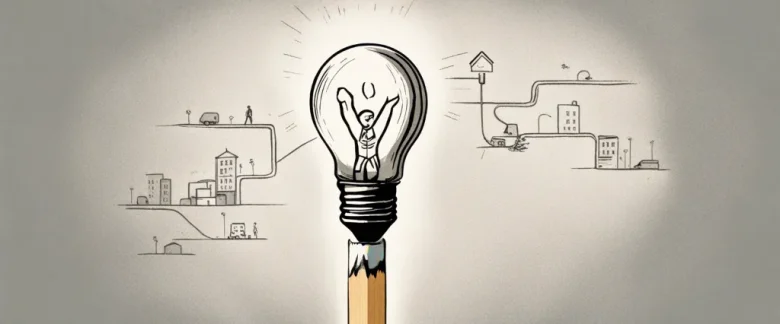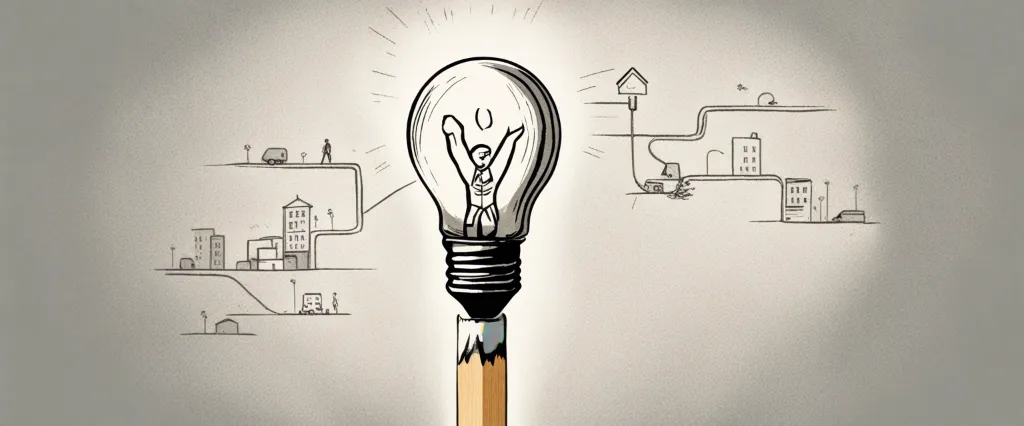In “Work Smarter Not Harder,” Timo Kiander offers a refreshing perspective on productivity, guiding readers towards a more efficient and fulfilling work-life balance. Drawing upon his own experiences as an entrepreneur and blogger, Kiander presents practical strategies, tips, and techniques to help individuals maximize their time and achieve their goals. With his expertise in productivity enhancement and personal development, Kiander empowers readers to overcome common obstacles, prioritize effectively, and harness their potential for success. By applying the principles outlined in this book, readers can transform their approach to work and experience greater productivity, efficiency, and personal satisfaction.
Chapter 1: The Importance of Work Efficiency
Chapter 1 of “Work Smarter Not Harder” by Timo Kiander focuses on the significance of work efficiency in our professional lives. The chapter begins by highlighting the common problem of feeling overwhelmed and constantly busy, despite putting in long hours. Kiander argues that it is not the amount of time we spend working, but the effectiveness of our work that truly matters.
The author emphasizes the importance of prioritizing tasks and setting specific goals in order to maximize work efficiency. He introduces the concept of the “Pareto Principle,” also known as the 80/20 rule, which suggests that 80% of results come from 20% of efforts. Applying this principle allows individuals to identify the tasks that will have the greatest impact and focus on those to achieve optimal results.
Another key aspect discussed in the chapter is the need for focus and concentration. Kiander explains how distractions, such as social media, email notifications, and multitasking, can significantly hinder productivity. He provides practical tips for minimizing distractions and creating an environment conducive to deep work, such as setting designated time slots for checking emails and turning off notifications.
Furthermore, the author stresses the importance of taking breaks and allowing for moments of rest and rejuvenation. He highlights research that shows how breaks can not only improve mental clarity and focus but also enhance overall work efficiency.
In summary, Chapter 1 of “Work Smarter Not Harder” emphasizes the significance of work efficiency in achieving success. Kiander encourages readers to prioritize tasks, utilize the 80/20 rule, eliminate distractions, and take regular breaks in order to work more effectively and accomplish desired goals.
Chapter 2: Optimizing Time Management
Chapter 2: Optimizing Time Management of the book “Work Smarter Not Harder” by Timo Kiander provides valuable insights and practical tips for maximizing productivity and efficiency in managing time effectively.
The chapter begins by emphasizing the importance of setting clear goals and priorities. Kiander advises readers to focus on meaningful objectives rather than getting caught up in less critical tasks. By setting specific, measurable, achievable, relevant, and time-bound (SMART) goals, individuals can streamline their efforts and direct their energy toward high-priority activities.
Kiander introduces the concept of time blocking, a technique that involves scheduling specific time slots for different tasks and activities. This practice helps individuals allocate their time efficiently and reduces distractions by creating boundaries for each activity. By identifying the most productive time of day and scheduling high-value tasks during that period, one can optimize concentration and effectiveness.
Moreover, the chapter emphasizes the significance of eliminating unnecessary distractions and interruptions. Kiander suggests implementing techniques such as utilizing time-management apps or turning off non-essential notifications to minimize interruptions and maintain focus. He also stresses the value of taking regular breaks to recharge and enhance productivity.
Additionally, Kiander introduces the Eisenhower Matrix, a tool for prioritizing tasks based on urgency and importance. This matrix helps individuals identify and focus on tasks that contribute to their long-term goals and overall success, while minimizing time spent on less significant activities.
The chapter concludes by highlighting the benefits of conducting periodic time assessments, where individuals review how they spend their time and identify areas for improvement. Kiander urges readers to be intentional about their time management efforts, constantly seeking ways to optimize their routines and align their actions with their goals.
Overall, Chapter 2 provides practical strategies, techniques, and tools to optimize time management, enabling readers to work smarter, enhance productivity, and achieve their desired results efficiently.
Chapter 3: Setting Clear Goals
Chapter 3 of the book “Work Smarter Not Harder” by Timo Kiander focuses on the importance and process of setting clear goals. Kiander emphasizes that having clear goals helps individuals stay focused, increases motivation levels, and enables effective time management.
The chapter begins by highlighting the concept of goal setting and how it can be challenging for many people due to fear of failure or lack of direction. Kiander informs readers that goals should be specific, measurable, achievable, relevant, and time-bound (SMART). Setting SMART goals is crucial as it provides a clear understanding of what needs to be accomplished and creates a sense of urgency to work towards achieving those goals.
Kiander provides a step-by-step approach to setting clear goals. The first step is to define the long-term vision or purpose, which acts as the foundation for setting short-term goals. Next, he advises breaking down the long-term goals into smaller, manageable short-term goals. By breaking goals into smaller tasks, they become easier to accomplish, leading to a sense of progress and momentum.
Furthermore, Kiander emphasizes the significance of setting achievable goals. Unrealistic goals only lead to frustration and demotivation. He advises readers to set goals that challenge but are within their reach.
The chapter also highlights the importance of tracking and reviewing goals regularly. This allows individuals to evaluate progress, make necessary adjustments, and stay on track.
In summary, Chapter 3 of “Work Smarter Not Harder” emphasizes the importance of setting clear goals using the SMART framework. By doing so, individuals can enhance their focus, motivation, and time management skills. The chapter provides a step-by-step guide to help readers define their long-term vision, break it down into achievable short-term goals, and regularly review and adjust their progress.
Chapter 4: Effective Task Prioritization

Chapter 4 of “Work Smarter Not Harder” by Timo Kiander focuses on effective task prioritization. The chapter begins by discussing the importance of distinguishing between urgent and important tasks. Urgent tasks are those that require immediate attention, while important tasks contribute to long-term goals and have a lasting impact. Kiander introduces the Eisenhower Matrix, a tool that helps categorize tasks based on their urgency and importance.
The chapter outlines a step-by-step process for prioritizing tasks. Firstly, it advises making a comprehensive list of all the tasks that need to be completed. Next, the Eisenhower Matrix is used to categorize each task into one of four quadrants: important and urgent, important but not urgent, not important but urgent, and not important or urgent.
After identifying the priority of each task, Kiander emphasizes the need to focus on the important but not urgent quadrant. These tasks often contribute to long-term goals and should not be left until they become urgent. The author provides strategies for avoiding procrastination and tackling these tasks, such as breaking them down into smaller, manageable steps and scheduling specific time blocks to work on them.
Additionally, the chapter addresses the importance of avoiding distractions and interruptions while working on tasks. Kiander suggests using various techniques, such as turning off notifications, setting boundaries, and utilizing productivity-enhancing tools to stay focused and prioritize tasks effectively.
In summary, Chapter 4 of “Work Smarter Not Harder” highlights the significance of effective task prioritization by using the Eisenhower Matrix. It provides practical advice on managing urgent and important tasks, emphasizing the need to focus on important tasks before they become urgent. The chapter also emphasizes the importance of avoiding distractions and interruptions for better productivity.
Chapter 5: Efficient Workflow
Chapter 5 of “Work Smarter Not Harder” by Timo Kiander focuses on establishing an efficient workflow to maximize productivity and effectiveness. Kiander emphasizes the importance of taking control of one’s time by implementing various strategies.
The chapter begins by discussing the power of lists and how creating to-do lists can help prioritize tasks. Kiander suggests building lists based on daily, weekly, and monthly targets, categorizing them by urgency and importance. He recommends using tools like Evernote or task management apps to keep track of deadlines, tasks, and progress.
Kiander then introduces the concept of batching similar tasks to increase efficiency. By grouping similar activities together, such as answering emails or making phone calls, individuals eliminate the loss of time and energy caused by context switching. This enables them to focus better and complete tasks more quickly.
Another key aspect of workflow efficiency is tackling the toughest tasks first. Kiander encourages readers to identify their peak energy periods and use them to their advantage. By starting the day with challenging, high-priority tasks, individuals can make significant progress without being drained by smaller, less important tasks.
Additionally, the chapter highlights the importance of avoiding multitasking. Kiander explains how attempting to do many things at once decreases focus and quality of work. He advises readers to resist distractions, close unnecessary tabs or apps, and allocate time blocks exclusively for specific tasks.
Kiander also emphasizes the value of taking short breaks to recharge and reduce stress. Regular breaks enhance productivity when they are planned and used strategically. Finally, the chapter concludes by encouraging readers to reflect on their workflow and make necessary adjustments to continually improve their efficiency.
In summary, Chapter 5 of “Work Smarter Not Harder” provides practical techniques for establishing an efficient workflow. By utilizing to-do lists, batching tasks, prioritizing challenging assignments, avoiding multitasking, and taking planned breaks, individuals can optimize their productivity and achieve better results in less time.
Chapter 6: Avoiding Distractions and Procrastination
Chapter 6 of the book “Work Smarter Not Harder” by Timo Kiander is titled “Avoiding Distractions and Procrastination.” In this chapter, Kiander addresses the common issues of distractions and procrastination that hinder productivity and provides strategies to overcome them.
Kiander first emphasizes the importance of recognizing distractions and actively working to eliminate them. He highlights the impact of multitasking, explaining that it leads to decreased focus and increased errors. To combat this, he recommends creating a distraction-free environment, such as turning off notifications or finding a quiet space to work. Additionally, Kiander suggests utilizing time management techniques, like the Pomodoro Technique, which involves setting specific time intervals for focused work and short breaks.
The author then delves into the topic of procrastination, explaining that it often stems from fear or uncertainty. He encourages readers to break tasks into smaller, manageable parts and set realistic deadlines. Kiander also stresses the significance of prioritizing tasks based on their importance and urgency, using techniques like the Eisenhower Matrix.
Furthermore, Kiander discusses the impact of digital distractions, particularly social media and email. He advises implementing specific times to check emails and limiting social media use during designated breaks. Additionally, he recommends utilizing productivity tools and apps that block social media or restrict access to certain websites.
Throughout the chapter, Kiander emphasizes the need for self-discipline and self-awareness to overcome distractions and procrastination. By implementing the strategies and techniques outlined, individuals can improve their focus, increase productivity, and work smarter rather than harder.
Chapter 7: Increasing Work Quality and Output
Chapter 7 of “Work Smarter, Not Harder” by Timo Kiander focuses on techniques and strategies to increase work quality and output. The chapter begins by emphasizing the crucial role of prioritization in maximizing productivity. Kiander suggests using the Eisenhower Matrix, a tool that helps individuals categorize tasks into four quadrants based on their importance and urgency. This enables individuals to focus on high-priority tasks that contribute significantly to their work quality and output.
Kiander also emphasizes the importance of utilizing technology and automation to streamline work processes. He suggests using task management apps, setting up email filters, and using automation tools to minimize unnecessary manual work and improve productivity. By exploiting the benefits of technology, individuals can delegate certain tasks and concentrate on more essential aspects, thus increasing work quality and output.
The chapter also highlights the significance of continuous learning and personal development in enhancing work quality. Kiander recommends seeking feedback, attending workshops or training programs, and investing in one’s professional growth. By constantly improving skills and knowledge, individuals can provide better quality work and achieve higher output levels.
Moreover, Kiander emphasizes the importance of setting achievable goals and breaking them down into manageable tasks. By doing so, individuals can stay motivated, measure progress, and ultimately improve their work quality and output.
Lastly, the chapter explores the concept of batching similar tasks together. Kiander suggests grouping similar tasks to minimize context switching and enhance productivity. This approach allows individuals to focus more efficiently, resulting in higher-quality work and increased output.
In summary, Chapter 7 of “Work Smarter, Not Harder” by Timo Kiander provides practical techniques such as effective prioritization, leveraging technology, continuous learning, goal setting, and task batching to increase work quality and output. By implementing these strategies, individuals can work more efficiently and produce higher-quality results in less time.

Chapter 8: Continuous Learning and Development
Chapter 8 of “Work Smarter Not Harder” by Timo Kiander focuses on the importance of continuous learning and development in achieving success and productivity in both personal and professional aspects of life. Kiander emphasizes how learning should be a lifelong process rather than something limited to the academic years.
The chapter begins by discussing the benefits of continuous learning, including personal growth, increased confidence, and the ability to adapt to new challenges. Kiander explains that continuous learning involves expanding one’s skills and knowledge through various means, such as reading books, attending seminars, taking online courses, or seeking mentorship.
To effectively maintain continuous learning, Kiander suggests creating a learning plan that outlines specific goals and objectives. He advises readers to identify their areas of interest or areas in which they want to improve and then develop strategies to achieve those goals. Kiander encourages setting aside dedicated time for learning and utilizing different resources, such as books or online platforms, to enhance knowledge and skills in those chosen areas.
The chapter also highlights the importance of reflection and review as part of the learning process. Kiander stresses the significance of regularly evaluating one’s progress and adjusting learning strategies if necessary. Additionally, he recommends seeking feedback from mentors or trusted individuals who can provide valuable insights and suggestions for improvement.
Furthermore, Kiander emphasizes the role of curiosity in continuous learning and encourages readers to cultivate a mindset of curiosity towards new ideas, concepts, and experiences. By embracing curiosity, individuals can develop a natural inclination towards constant growth and development.
In conclusion, Chapter 8 of “Work Smarter Not Harder” emphasizes the significance of continuous learning and development for personal and professional success. Kiander provides practical advice on creating learning plans, allocating time for learning, seeking feedback, and embracing curiosity to foster a lifelong journey of growth and improvement.
After Reading
In conclusion, Timo Kiander’s book, “Work Smarter Not Harder,” provides valuable insights and practical tips on how to increase productivity and efficiency in today’s fast-paced work environment. By emphasizing the importance of time management, setting clear goals, and minimizing distractions, Kiander shows readers how to make the most out of their time and achieve better results. Through his personal experiences and relatable examples, he encourages individuals to prioritize their workloads, harness technology effectively, and maintain a healthy work-life balance. Overall, “Work Smarter Not Harder” serves as a comprehensive guide for anyone looking to optimize their productivity, reduce stress, and achieve more with less effort.
1. The 4-Hour Workweek: Escape 9-5, Live Anywhere, and Join the New Rich” by Timothy Ferriss – This book provides practical strategies to improve productivity and achieve a more fulfilling work-life balance.
2. Deep Work: Rules for Focused Success in a Distracted World” by Cal Newport – In this book, Newport explores the concept of deep work and shares techniques to enhance concentration, eliminate distractions, and achieve peak productivity.
3. Essentialism: The Disciplined Pursuit of Less” by Greg McKeown – McKeown offers valuable insights on prioritization, eliminating non-essential tasks, and focusing on what truly matters to achieve greater efficiency and satisfaction.
4. Atomic Habits: An Easy & Proven Way to Build Good Habits & Break Bad Ones” by James Clear – Clear presents a step-by-step guide to creating and sustaining positive habits that contribute to personal and professional success.
5. Smarter Faster Better: The Secrets of Being Productive in Life and Business” by Charles Duhigg – Duhigg explores the science behind productivity and shares strategies to enhance motivation, decision-making, and overall efficiency.
These books offer valuable insights and actionable advice to improve productivity, time management, and achieve a more fulfilling work-life balance. They provide readers with practical techniques, real-life examples, and thought-provoking concepts to help them work smarter and more effectively.




